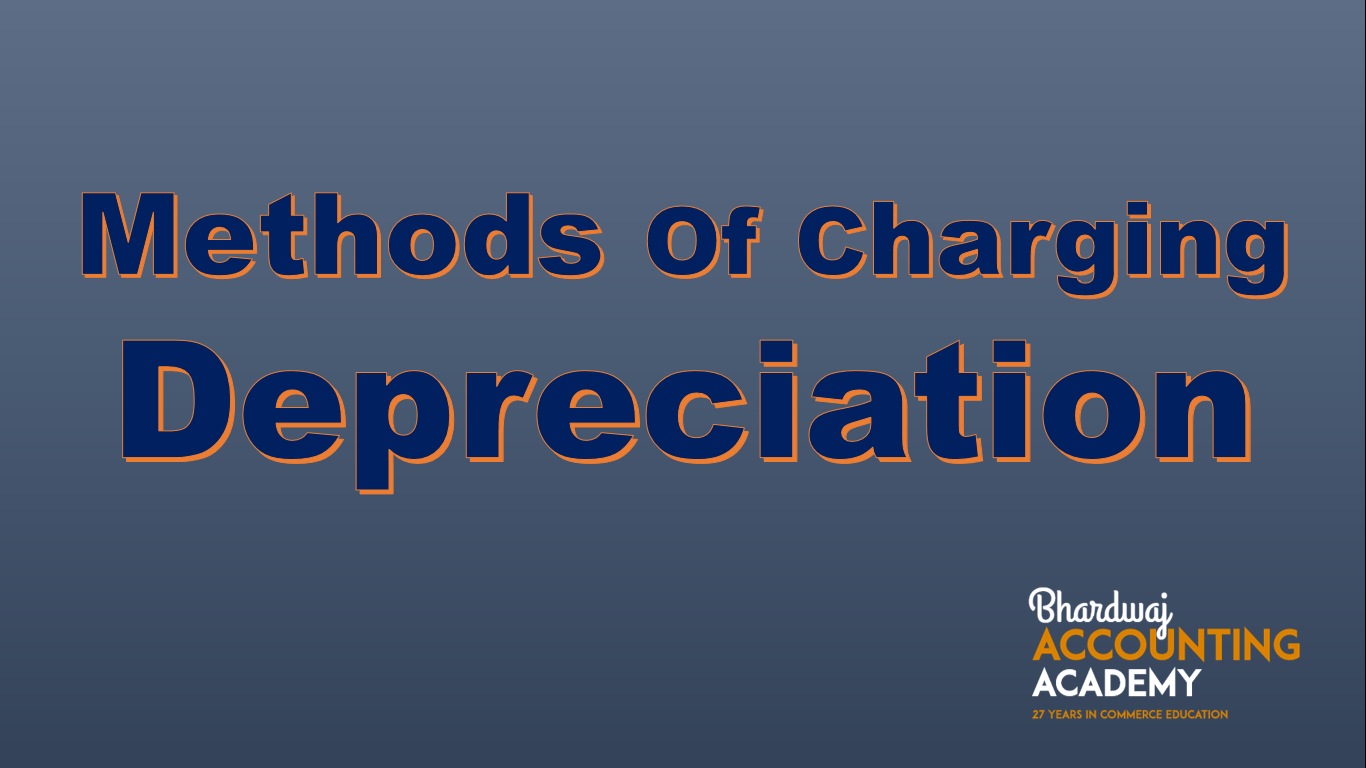Methods of Charging Depreciation
Methods of Charging Depreciation
There are several methods of charging depreciation on fixed assets, some of the important ones are as follows:
1. Fixed Instalment Method or Straight-line Method Or Equal Instalment Or Simple Method of depreciation,
2. Diminishing Balance Method Or Reducing Balance Method Or Written Down Value Method,
3. Annuity Method,
4. Depreciation Fund Method,
5. Insurance Policy Method,
6. Revaluation Method Or Annual Valuation Method,
7. Machine Hour Method,
8. Depletion Method Or Production Unit Method,
9. The sum of the Year Digits Method,
10. Distance Method,
11. Double Declining Balance Depreciation Method
1. Fixed Instalment Method or Straight-line Method Or Equal Instalment Or Simple Method of depreciation:
The fixed instalment method refers to the method in which depreciation is calculated every year on the original cost of the asset, in this method the amount of depreciation remains the same every year. It is also known by the names of the straight-line method, simple method of depreciation, original cost method, equal installation method etc. In this method, the value of the asset becomes zero or equal to the scrap value at the end of the life of the asset. The calculation of depreciation in this method is very simple.
Features of Fixed Instalment Method:
1. Depreciation is charged every year on the original cost of the asset.
2. The amount of depreciation remains the same every year.
3. In this method the assets can be written off to zero.
4. The value of the assets decreases at the same rate every year.
5. The residual value is taken into account while computing the depreciation.
6. The calculation of depreciation under this method is very simple, hence the method is widely popular.
7. Once the amount of depreciation is calculated, the same amount is written off as depreciation every year.
Calculation of Annual Depreciation in Fixed instalment method:
1. While the cost of the Assets and the estimated life of Assets is given, the annual depreciation is calculated by the following formula:
Example 1: A Machinery is purchased on 1st January 2020 for ₹5,00,000, the estimated life of the Machinery is 10 years, the books are closed on 31st March every year. Depreciation is charged on fixed instalment method. Calculate annual depreciation.
Annual depreciation=₹5,00,000/10
Annual depreciation= ₹50,000
2. While the cost of the Assets, estimated life of Assets and scrap value of assets is given, the annual depreciation is calculated by the following formula:
Example 2: A Machinery purchased on 1 January 2019 for ₹6,00,000, the estimated life of the machinery is 11 years and the residual value is estimated at ₹50,000. the books are closed on 31st March every year. Depreciation is charged on fixed instalment method. Calculate annual depreciation.
Annual depreciation=₹6,00,000-50,000/11
Annual depreciation= ₹5,50,000/11
Annual depreciation= ₹50,000
3. While the cost of the Assets and rate of depreciation is given, the annual depreciation is calculated by the following formula:
Example 3 : A Machinery was purchased on 1st January 2019 for ₹9,00,000, ₹1,00,000 were spent in setting up the Machinery. The books are closed on 31st March every year. Depreciation is charged at the rate of 10% p.a. by the fixed instalment method. Calculate annual depreciation.
Annual depreciation=(₹9,00,000+₹1,00,000)×10/100
Annual depreciation=₹10,00,000×10/100
Annual depreciation= ₹1,00,000
Example 4: X-Company Ltd purchased A Machinery on 1st April 2020 for ₹8,50,000, Installation Expenses paid ₹1,20,000 and freight paid on Machinery ₹30,000. The books are closed on 31st March every year. Depreciation is charged at the rate of 12% p.a. by the fixed instalment method. Calculate annual depreciation.
Annual depreciation=(₹8,50,000+₹1,20,000+₹30,000)×12/100
Annual depreciation=₹10,00,000×12/100
Annual depreciation= ₹1,20,000
Depreciation MCQs with solved answer
Methods of Charging Depreciation



